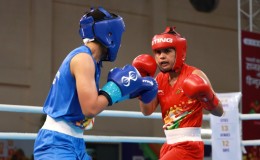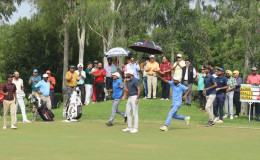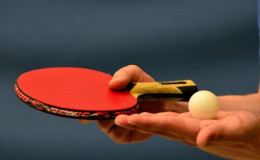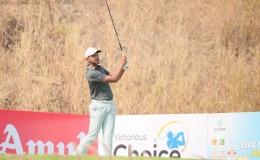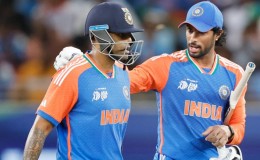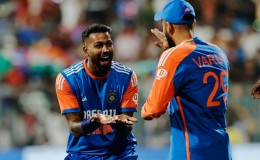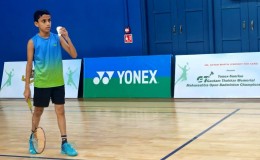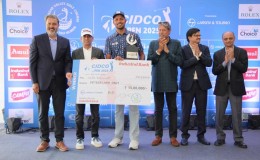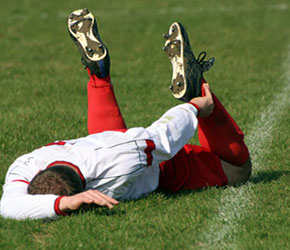 Tragedy struck the BDFA ‘A' division football league on March 21 when D. Venkatesh, a 23-year-old footballer with the Bangalore Mars, died after collapsing on the ground. As usual, the lack of medical facilities and the ambulance at the stadium for matches of this level was one of the reasons for Venkatesh’s demise as his teammates had to hire an auto rickshaw and take him to Hosmat Hospital. But by then he had already succumbed to his injuries and was declared dead on arrival by the doctors.
Tragedy struck the BDFA ‘A' division football league on March 21 when D. Venkatesh, a 23-year-old footballer with the Bangalore Mars, died after collapsing on the ground. As usual, the lack of medical facilities and the ambulance at the stadium for matches of this level was one of the reasons for Venkatesh’s demise as his teammates had to hire an auto rickshaw and take him to Hosmat Hospital. But by then he had already succumbed to his injuries and was declared dead on arrival by the doctors.
A few day back, Bolton's player Fabrice Muamba had to be brought back to life after spending nearly an hour and 20 minutes without his own heartbeat (as revealed by his medical team).
And not very long ago (August 2011), a similar tragedy had occurred in Japan as international soccer player Naoki Matsuda collapsed during a warm up and could not be revived. It sent shock waves not only in Japan but across the world with the announcement of his death after battling for life for two days. Initially it was thought that Matsuda died due to heat stroke, but medics now say it was a cardiac arrest.
Matsuda with 40 international caps and more than 350 matches to his credit and having defended his country in 2002 World Cup co-hosted by Japan and Korea, is gone at the young age of 34 years and that too when Japan had just smiled after their women lifted the World Cup a fortnight ago, that too after having suffered from the aftermath of the devastating earthquake.
FIFA medical committee says it will keep happening till we all are determined to screen all our soccer players especially at professional level. The various causes of sudden death has been dwelt at length by sports physicians and is classified as in under 35 the commonest cause being the HCM (hypertrophic cardiac myopathy) and in above 35 years it is due to heart rhythm problems and coronary artery disease. Questions asked are that such fit and highly trained sportspersons also have heart problems and answer is ‘Athletes heart, which is a physiological adaptation, has to be assessed periodically from turning into various pathological conditions.
There are numerous causes from non-traumatic to traumatic including concussions and cervical spine injuries and various syndromes and underlying congenital anomalies. After the unchallenged death of Cameroon midfielder Marc Vivien -foe’ in the Confederation Cup at Lyons in 2003 when he was stretchered dead in front of 40,000 capacity crowd which included his wife and mother, it was shocking that he could not be saved and was termed as billion dollar tragic death. The cause was cardiac arrest due to Hypertrophic Cardiac Myopathy, as revealed on autopsy. Similar incidence of 22-year-old Seville defender Antonio Puerta took place in 2007 and he too again had a cardiac arrest. To prevent this, FIFA medical commission advised all member nations to carry out annual precautionary screening in all soccer players with preliminary medical examination and cross checking of any family history of heart conditions to any episodes of dyspnoea, dizziness, seizures, chest pain, palpitation, irregular heart beat etc and leading to a basic investigation of 12 channels ECG.
To prevent this, FIFA medical commission advised all member nations to carry out annual precautionary screening in all soccer players with preliminary medical examination and cross checking of any family history of heart conditions to any episodes of dyspnoea, dizziness, seizures, chest pain, palpitation, irregular heart beat etc and leading to a basic investigation of 12 channels ECG.
In our country we also saw the death of Brazilian Dempo player Cristiano Junior at Bangalore in 2004 Federation Cup when he struck against Subrata Pal. This happened since we faltered in spite of clear instructions to have the bare minimum defibrillators at the ground first aid stations with trained medics and Junior was gone before reaching hospital. Normally two stretcher bearers are placed on duty with unequipped Ambulance in any of our club matches and medical arrangements always take a back seat by our sports administrators who are more concerned about the snacks for the chief guests and their security and not interested about the technical requirements of the medical team which are the life saving requirements for players.
These sudden deaths have also been seen in other sports too and death of world’s most flamboyant athlete Jackie Joyner Kersie or Flo Jo at the young age after having turned the world tracks blaze is another riddle as to whether it was due to drugs or congenital anomaly which was not detected in such high profile athlete.
It’s high time when we have a farsighted and broader approach that at the time of induction of players in various clubs , Federation or clubs spend on all the players participating in I-league on their basic cardiovascular screening every year with an ECG and as advocated by FIFA all professional players to undertake an echocardiography every five years so as to detect any conduction problems or any other cardiac abnormalities starting in these young hearts who give us the pleasure of their skill and tactics to avoid such kinds of tragedies. Also to ensure adequate medical arrangements at every venue and all matches be it at club or qualifying. We don’t want such deaths in sporting grounds to torment as these unsavoury incidents are no more confined to the grounds but can be seen live in millions of homes watching the matches on their TV sets.
By Dr Ashok Ahuja
Former Head of Department of Sports Medicine & Sciences
NSNIS
Patiala


